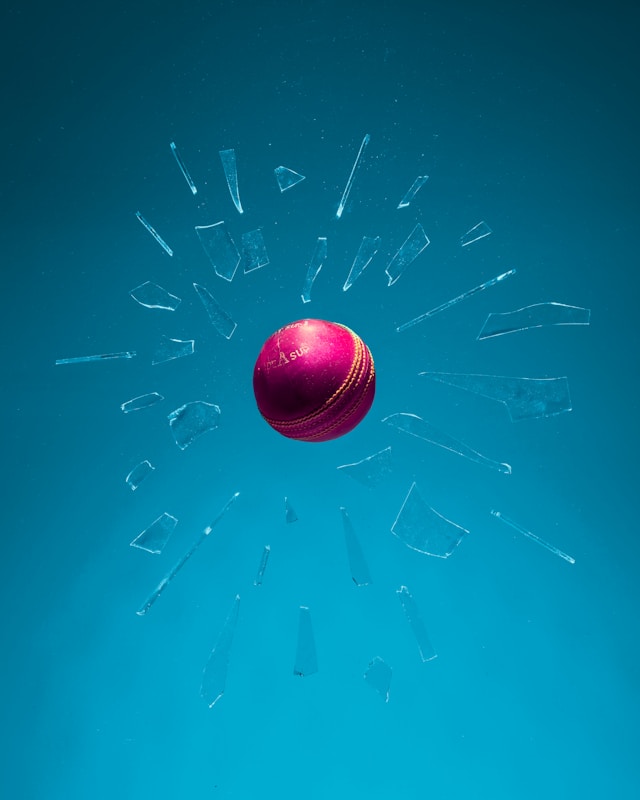Ah, cricket. A game of glorious uncertainty. One moment, the batter is celebrating a boundary; the next, they’re staring in disbelief at the umpire, convinced they’ve been robbed. Before 2008, there was no turning back from a dodgy call. Umpires, despite their experience, are human. That’s why DRS was implemented.
So, what is DRS in cricket? Simply put, it’s a technology-based system that allows teams to challenge the on-field umpire’s decision. If a bowler thinks they’ve trapped the batter LBW but the umpire disagrees, or a batter is convinced they didn’t edge the ball despite a confident appeal, DRS comes into play. It was designed to correct clear errors, not to replace umpires but to support them with a technological safety net.
Since its introduction, DRS rules in cricket have gone through significant changes. From the initial skepticism of cricket boards to teams learning how to use their reviews wisely, the system has evolved into an indispensable part of the game. The concept of the DRS timer in cricket meaning also plays a key role — teams must decide within 15 seconds whether to request a review, adding a strategic twist. In pressure situations, that decision window can feel like a vipking moment — bold, decisive, and with everything on the line.
But how did this all start? Let’s take a trip down memory lane.

The meaning of DRS in cricket
At its core, DRS is designed to eliminate obvious mistakes, particularly for two types of dismissals:
- LBW (Leg Before Wicket) – When there’s uncertainty about whether the ball would have hit the stumps.
- Caught Behind – When a batter is unsure if they edged the ball.
Before DRS, cricket had a history of controversial umpiring decisions — sometimes costing teams crucial matches. Fans still remember Michael Kasprowicz’s dismissal in the 2005 Ashes, where replays later showed his hand was off the bat when he gloved the ball. Or the 2011 World Cup semi-final, where Sachin Tendulkar’s LBW was overturned after initially being given out. Moments like these proved that technology was needed to aid decision-making rather than rely purely on the naked eye.
Since its introduction, DRS has transformed cricket strategy. Batters and bowlers now use tactical reviews, knowing they only get a limited number per innings. It has also introduced psychological warfare — teams must decide quickly whether to challenge, often leading to moments of hesitation or regrettable calls. The DRS timer meaning in cricket ensures they don’t take forever to make up their minds — 15 seconds, and the chance is gone!
History and evolution of DRS
DRS didn’t just walk into cricket and become a hero overnight. Oh no, it had to earn its stripes, facing resistance, controversy, and good old-fashioned cricket politics before becoming the norm.
The early days
The journey began in 2008, when Sri Lanka and India became the first teams to trial the system in a Test match. Back then, it was called the Umpire Decision Review System (UDRS) — a name that didn’t quite stick. The trial saw 12 decisions overturned, but only one went in India’s favor, leading to initial skepticism from the BCCI.
Despite this shaky start, November 2009 saw the official introduction of DRS in Test cricket. ODIs followed in 2011, and by 2017, the ICC made DRS mandatory in T20 internationals. But its path was anything but smooth.
Challenges and opposition
Cricket’s powerhouses had mixed feelings about the system. While England and Australia embraced it, India refused to use DRS in bilateral series for years. The BCCI, led by powerful figures in world cricket, questioned its accuracy — especially the ball-tracking technology. Their stance softened only in 2016, when they agreed to trial it in a series against England.
Another major talking point? The DRS timer in cricket meaning. Initially, teams were unsure how long they had to decide whether to review a decision. The ICC officially set it at 15 seconds, ensuring teams couldn’t waste time debating before making their move.
Key changes over time
Since its introduction, DRS rules in cricket have gone through several refinements:
- 2013 – Teams were allowed to reset their reviews after 80 overs in Tests.
- 2016 – ICC changed the controversial 2.5-meter rule. This rule allows an on-field Not Out LBW decision to be overturned even if the batter is struck 2.5 meters or more from the stumps. Previously, such decisions required over 50% of the ball to hit the stumps, often resulting in Umpire’s Call. Now, if the ball is shown to hit any part of the middle stump, the umpire can reverse their decision, making LBW dismissals more likely even when the batter is far down the pitch.
- 2018 – DRS was finally introduced in the Indian Premier League (IPL).
- 2021 – ICC retained Umpire’s Call but added three minor changes. For LBW reviews, the height margin of the Wicket Zone now extends to the top of the stumps, ensuring Umpire’s Call applies equally to both height and width. Players can now ask the umpire if they attempted to play a shot before deciding to review an LBW decision. Additionally, the third umpire will review short-run calls and correct any mistakes before the next ball is bowled.
What started as an experimental idea is now a fully accepted part of cricket. The evolution of DRS is one of the biggest advancements in the sport’s history.
How DRS works in cricket
Now, let’s get into the mechanics of how DRS actually works.
Player reviews: challenging the Umpire’s decision
When a team disagrees with an umpire’s decision, they have 15 seconds to request a review — this is where the DRS timer in cricket meaning becomes crucial. Once a batter or the fielding captain signals a “T” shape with their hands, the third umpire takes over the decision-making process.
Steps in a Player Review:
- Check for a fair delivery – If the bowler overstepped, it’s an automatic no-ball, and the batter survives.
- Review UltraEdge/Snicko – Detects if the ball hit the bat using sound wave technology.
- Check Hot Spot (if available) – Uses infrared imaging to detect ball contact.
- Ball Tracking (Hawk-Eye) – Projects whether the ball would have hit the stumps in an LBW decision.
- Final Decision – If the evidence proves the on-field umpire made an error, the decision is overturned. If it remains unclear, the original call stands (Umpire’s Call).
Umpire reviews: the tech backup for tough calls
Umpires can also refer certain decisions to the third umpire. Unlike player reviews, there are no limits to how many times an umpire can do this.
Typical cases where umpires go upstairs:
- Run-outs
- Stumpings
- Close catches
- Boundary checks
These reviews don’t count as part of the player DRS quota — they’re simply there to ensure accuracy in tight situations.
Technologies used in DRS
Cricket, a sport that once relied solely on the sharp eyes of umpires, now boasts some of the most cutting-edge technology to ensure fairness. When DRS is used, it involves complex technology that detects edges, tracks ball paths, and analyzes impact points. Let’s explore the tools that enable DRS.
UltraEdge & snickometer – the sound detectives
Ever wondered how they pick up those faintest of edges when even the batter isn’t sure? Enter UltraEdge and Snickometer, cricket’s top-tier audio tools. These systems use high-frequency sound waves and real-time footage to detect the slightest noise when the ball passes the bat. If there’s a spike on the graph right as the ball goes past the bat, it’s game over — the batter is caught red-handed (or should we say, red-batted?).
Hawk-Eye – the ball-tracking wizard
Ah, the famous Hawk-Eye — the one responsible for those dramatic LBW decisions! Using multiple camera angles, Hawk-Eye calculates the projected path of the ball, determining whether it would have hit the stumps or missed them altogether. It’s an incredible tool but not without its controversies, especially when it comes to Umpire’s Call — more on that later!
Hot Spot – the infrared lie detector
For those sneaky edges that don’t make a sound, Hot Spot comes to the rescue. This infrared imaging tool detects heat signatures from where the ball makes contact, be it the bat, pad, or even the batter’s glove. It’s incredibly accurate, but because it requires expensive infrared cameras, it isn’t always available in every series.
Slow-motion replays – the ultimate game-changer
Sometimes, all you need is a super slo-mo replay to confirm whether a batter has edged the ball, whether a fielder has taken a clean catch, or whether a bowler has just about managed to keep his foot behind the crease. Simple, yet effective!
| Technology | Purpose |
| UltraEdge | Detects sound of ball hitting bat or pad |
| Snickometer | Audio-based detection of faint edges |
| Hawk-Eye | Ball-tracking to predict LBW outcomes |
| Hot Spot | Infrared imaging to check ball contact |
| Slow-motion replay | Used for close calls on run-outs and stumpings |
DRS Rules in Cricket: when can a team call for DRS?
Now that we know how DRS works, let’s get into when teams can actually use it. Unlike a free-for-all TV replay binge, DRS is a strategic tool, and teams have to be wise about when they use their reviews.
When can a team use DRS?
- A DRS challenge can only be made after the on-field umpire has given a decision — no preemptive reviews!
- The captain of the fielding side or the batter given out must signal for a review within 15 seconds.
- Only certain dismissal types — LBW and caught behind — are reviewable by players.
How many reviews are allowed?
- In Test cricket, each team gets three unsuccessful reviews per innings.
- In ODIs and T20s, it’s two unsuccessful reviews per innings.
- Successful reviews don’t count against the limit — so if you’re right, you keep your review!
Umpire’s call explained
Ah, the infamous Umpire’s Call — the rule that keeps debates alive in pubs, living rooms, and commentary boxes worldwide.
- If Hawk-Eye shows that less than 50% of the ball would hit the stumps, the decision stays with the on-field umpire.
- If it’s an LBW call and the ball was only clipping the stumps, the batter stays not out if that was the original decision.
- Most importantly, teams don’t lose their review if the decision stays as Umpire’s Call — a small consolation prize!
Some players love it, some hate it, and some (cough Virat Kohli cough) have expressed their frustration loudly.
Controversies and criticism of DRS
Ah, where do we begin? DRS has had some iconic moments of drama, where decisions have swung entire matches and left teams fuming. Let’s take a look at some of the biggest controversies and criticisms.
Notable DRS controversies
2011 World Cup Semifinal – Sachin Tendulkar’s Lifeline
Tendulkar, playing against Pakistan, was initially given out LBW. But DRS overturned the decision, showing the ball would have missed the stumps. It was a game-changing moment that infuriated the opposition.
2013 Ashes – The Hot Spot Chaos
The use of Hot Spot in the Ashes led to several questionable decisions, with faint edges appearing (or not appearing) inconsistently. Australia was livid when Usman Khawaja was given out despite no visible edge on Hot Spot.
2022 South Africa vs. India – The Dean Elgar Controversy
One of the most heated DRS moments in recent memory! Dean Elgar was given out LBW, but ball-tracking showed the ball going over the stumps, shocking the Indian team. They even accused the host broadcasters of foul play!
Common criticisms of DRS
- Inconsistencies in Umpire’s Call – Why should a decision change based on a margin? Many argue that if the ball is hitting the stumps, it should be out — full stop!
- Hot Spot Not Always Reliable – Sometimes, it doesn’t show an edge, even when there is one. This led to massive disputes in the 2013 Ashes.
- The Cost of DRS – Smaller cricket boards struggle to afford full DRS setups, leading to an uneven playing field in some series.
To sum up the purpose of DRS, let’s hear from Anil Kumble, the man who helped shape its current form:
“The principle underpinning DRS was to correct clear errors in the game whilst ensuring the role of the umpire as the decision maker on the field of play was preserved, bearing in mind the element of prediction involved with the technology.”
— Anil Kumble, Former India Captain and ICC Cricket Committee Head
Impact of DRS on modern cricket
Love it or hate it, DRS has revolutionized cricket. It has led to:
- Fewer Umpiring Howlers – Gone are the days of blatant umpiring errors ruining matches.
- Strategic Reviews – Teams now tactically use reviews to their advantage, leading to more calculated risks.
- Future of AI and Automated Umpiring? – Could cricket one day see AI-driven umpiring decisions? Some believe the human element should always remain, but with technology improving, who knows what’s next?
So, there we have it. The Decision Review System has gone from being a controversial newcomer to a crucial part of the modern game. It has improved decision-making, reduced major errors, and given cricket a tech-powered fairness boost.
Sure, it’s still not perfect, and debates around Umpire’s Call and technology reliability will continue. But as the game evolves, so will DRS — and who knows? Maybe one day, we’ll see a fully automated umpire making all the calls!
For now, one thing is clear — DRS is here to stay, and cricket is better for it.
FAQ
1. What does DRS stand for in cricket?
DRS stands for Decision Review System, a technology-based system that allows teams to challenge on-field umpiring decisions to ensure accuracy and fairness.
2. When was DRS first introduced in international cricket?
DRS was first trialed in 2008 during a Test match between Sri Lanka and India. It was officially introduced in 2009 in Test cricket, and later in 2011 for ODIs. By 2017, it became mandatory in T20 internationals.
3. Why was DRS introduced in cricket?
Before DRS, umpiring errors often led to unfair dismissals, affecting match outcomes. DRS was introduced to correct clear mistakes, ensuring that technology could assist umpires in making the right decisions.
4. How does DRS work in cricket?
When a team disagrees with an umpire’s decision, they can challenge it within 15 seconds by making a “T” signal. The third umpire then reviews the decision using various technologies like UltraEdge, Hawk-Eye, and Hot Spot before confirming or overturning the call.
5. What are the main types of dismissals that can be reviewed using DRS?
DRS is mainly used for two types of dismissals:
- LBW (Leg Before Wicket) – To determine if the ball would have hit the stumps.
- Caught Behind – To check if the batter edged the ball.
6. What is the DRS timer in cricket, and why is it important?
The DRS timer refers to the 15-second window within which a team must decide whether to request a review. If they fail to signal within this time, they lose the opportunity to challenge the decision.
7. How many DRS reviews are allowed in Test cricket, ODIs, and T20s?
- Test cricket: Each team gets three unsuccessful reviews per innings.
- ODIs and T20s: Each team gets two unsuccessful reviews per innings.
Successful reviews do not count against the limit.
8. What happens if a team’s DRS review is unsuccessful?
If the third umpire upholds the on-field decision, the team loses that review. However, if the decision is overturned, the team keeps its review.
9. What is Umpire’s Call in DRS, and why is it controversial?
Umpire’s Call is a rule where if the ball-tracking system shows that less than 50% of the ball would hit the stumps, the on-field decision remains. Many criticize this because even if the ball is hitting the stumps, the batter can still be given not out if the original decision was not out.
10. What technologies are used in DRS to assist decision-making?
The key technologies used in DRS are:
- UltraEdge/Snickometer – Detects faint edges using sound waves.
- Hawk-Eye – Tracks the ball’s path to predict whether it would hit the stumps.
- Hot Spot – Uses infrared imaging to detect ball contact.
- Slow-motion replays – Used for close decisions like run-outs and stumpings.
Photo by Pickled Stardust on Unsplash (Free for commercial use)
Image published on August 18, 2021




